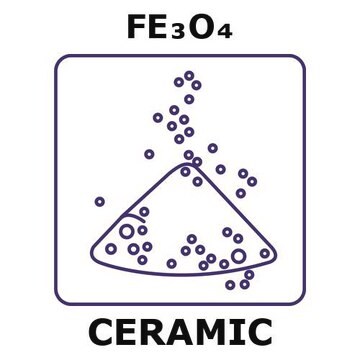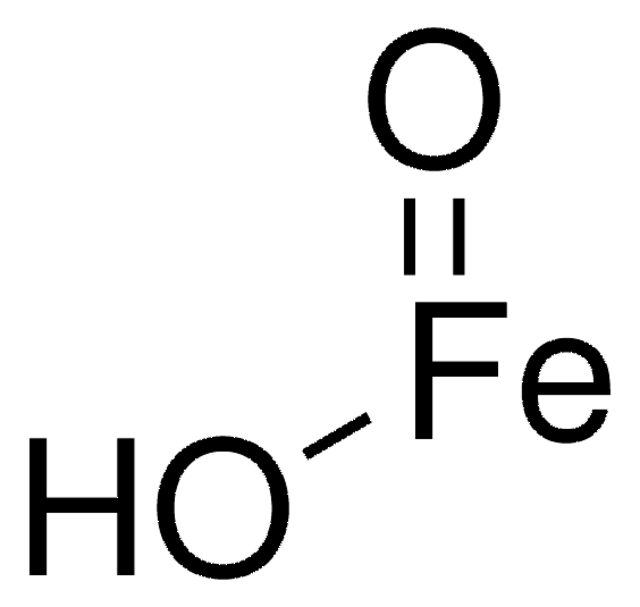544884
Iron(III) oxide
nanopowder, <50 nm particle size (BET)
Sinonimo/i:
Ferric oxide
About This Item
Prodotti consigliati
Descrizione
crystalline (primarily γ)
Livello qualitativo
Stato
nanopowder
Area superficiale
50-245 m2/g
Dimensione particelle
<50 nm (BET)
applicazioni
battery manufacturing
Stringa SMILE
O=[Fe]O[Fe]=O
InChI
1S/2Fe.3O
JEIPFZHSYJVQDO-UHFFFAOYSA-N
Cerchi prodotti simili? Visita Guida al confronto tra prodotti
Categorie correlate
Descrizione generale
Applicazioni
Caratteristiche e vantaggi
- High theoretical specific capacity
- Biocompatibility
- Ease of coating and modification
- Non-toxicity
Codice della classe di stoccaggio
13 - Non Combustible Solids
Classe di pericolosità dell'acqua (WGK)
nwg
Punto d’infiammabilità (°F)
Not applicable
Punto d’infiammabilità (°C)
Not applicable
Dispositivi di protezione individuale
dust mask type N95 (US), Eyeshields, Gloves
Scegli una delle versioni più recenti:
Possiedi già questo prodotto?
I documenti relativi ai prodotti acquistati recentemente sono disponibili nell’Archivio dei documenti.
I clienti hanno visto anche
Articoli
Innovation in dental restorative materials is driven by the need for biocompatible and natural-appearing restoration alternatives. Conventional dental materials like amalgam and composite resins have inherent disadvantages.
Currently, magnetic nanoparticles (MNPs) are attracting a lot of attention because of the possibility of many novel applications, especially in biomedical research.
Graphene is a unique two-dimensional (2D) structure of monolayer carbon atoms packed into a dense honeycomb crystal that has attracted great interest due to its diverse and fascinating properties.
Global Trade Item Number
| SKU | GTIN |
|---|---|
| 544884-25G | 4061838254061 |
| 544884-5G | 4061832567815 |
Il team dei nostri ricercatori vanta grande esperienza in tutte le aree della ricerca quali Life Science, scienza dei materiali, sintesi chimica, cromatografia, discipline analitiche, ecc..
Contatta l'Assistenza Tecnica.






